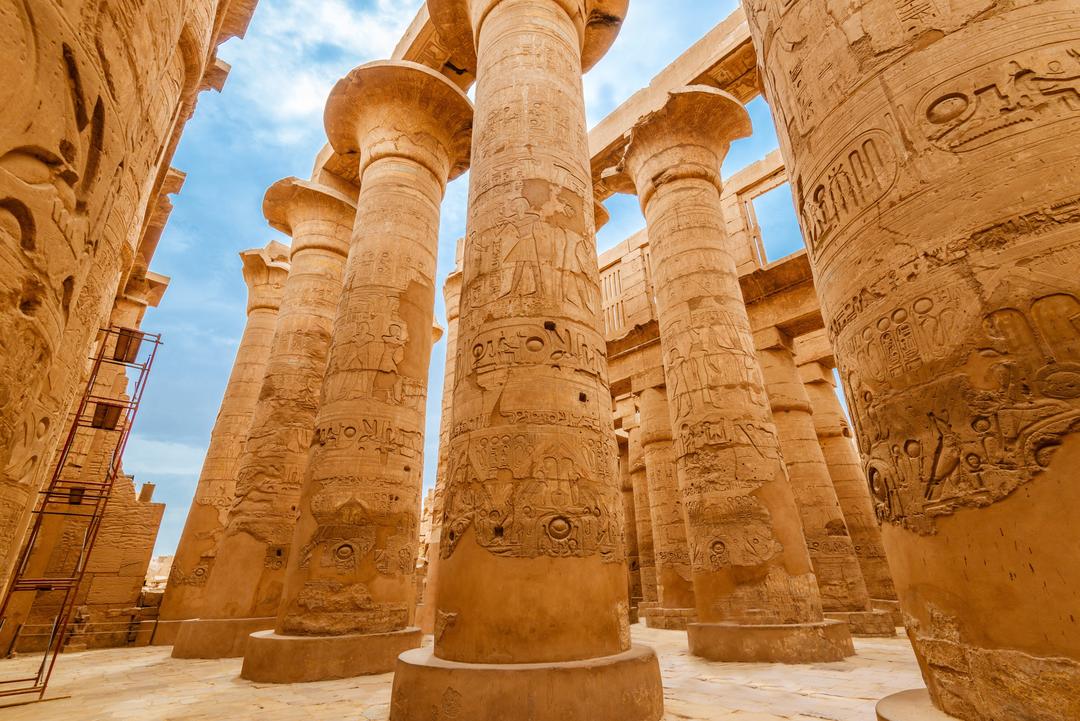Luxor Temple

Overview:
Despite its prominent name, Luxor Temple is actually the second most famous temple in Luxor behind the much larger and greater Temple of Karnak just down the road. However, Luxor Temple has several unique features of its own that merit a visit and some independent attention.
The first and most obvious aspect of Luxor Temple that you’ll notice when you arrive in Luxor is that it’s situated right in the middle of the town, making it by far the easiest and most convenient site in the area to explore. I actually resisted going inside Luxor Temple over the course of many visits to Luxor because I used to think that you could see all you needed to see of it from the outside during the course of riding to and from other sites and walking around town. But when I finally did go into Luxor Temple, I began including it as a must-see site while visiting the south of Egypt.

- • The oldest parts of Luxor Temple are over 3300 years old, dating to the reign of the pharaoh Amenhotep III. The temple was one of the few buildings that the boy king Tutankhamen was actually able to put his mark on as well, despite the brief nature of his reign and his early death. Other famous pharaohs also added onto Luxor Temple in their time, including Ramses the Great. Even Alexander the Great had a shrine built to honor him inside the temple complex, although it is unlikely that Alexander himself ever made it this far south during his time in Egypt. The prominent mixing of cultures, empires, and religious traditions within Luxor Temple is one of this site’s very unique characteristics. While the original temple during ancient Egyptian times was associated with the gods Amun, Mut, and Khonsu as well as with the deification of the pharaohs themselves and it played a central role in the annual Opet Festival, the site later played host to both a church and a mosque that were built within its walls by later societies that came to rule Egypt. In fact the mosque still stands prominently within Luxor Temple and is utilized for worship by the town’s local population today. The Romans also turned the temple into their headquarters after they took over Egypt from its Greco-Macedonian rulers upon the death and defeat of Cleopatra. While many of the Roman remnants have long since vanished, there still stands today a small chapel on the grounds built by the emperor Hadrian that was dedicated to the Roman god Sarapis.
- • One peculiar thing you’ll surely notice when you first walk up to Luxor Temple’s modern entrance is the random asymmetrical obelisk. This obelisk did originally have a sibling that stood with it at the entrance to the temple for thousands of years, but in 1832 the Ottoman ruler of Egypt, Muhammed Ali, gifted the right-hand obelisk to France, which promptly whisked the gigantic artifact off by barge to Paris where it is today prominently still on display as the centerpiece of the Place de la Concorde. Much of Luxor Temple was covered with sand and debris for hundreds of years until the French Egyptologist Gaston Maspero began re-excavating the complex in the late 19th century. By the 1960s much of Luxor Temple had been reclaimed for preservation and display, but some adjacent parts of the original temple complex had since been built over and absorbed into the modern city of Luxor
- • One such area was the Avenue of the Sphinxes, which laid buried beneath roads, shops, and houses in which modern Egyptians had built and lived their lives. Once discovered beneath the city in 2010, the Egyptian government had to relocate a good number of families who lived in the homes and apartments that had to be torn down in order to excavate the site. This yet again goes to show that much of Egypt is still an active archaeological site with countless ruins, artifacts, and treasures still undiscovered and teasing us from beneath the earth.